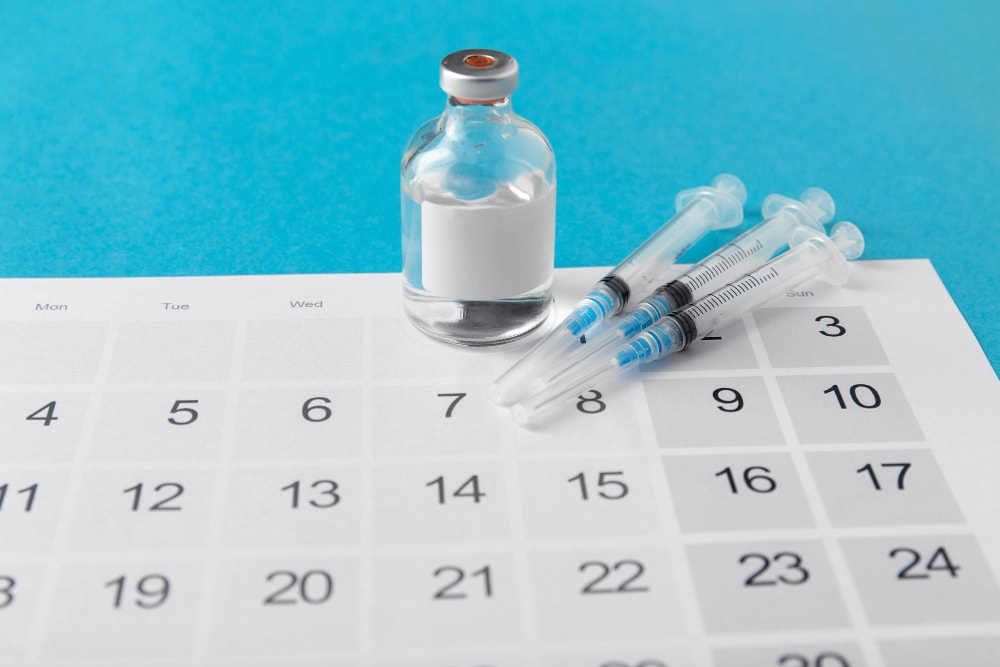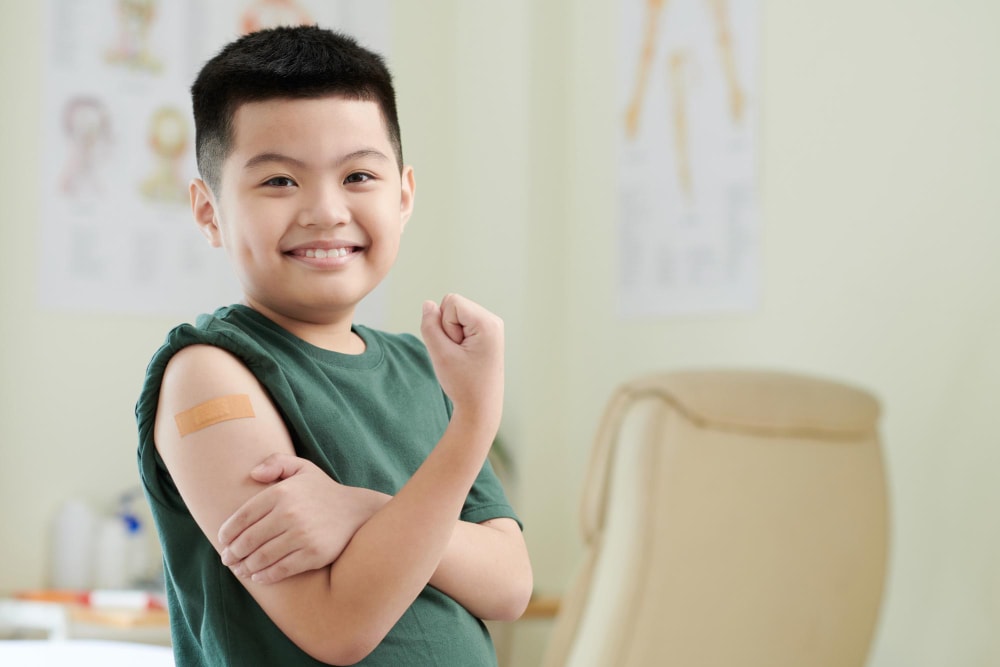
Navigating the Philippine Immunization Schedule for Your Children
Vaccination is one of the most vital steps parents can take to protect their children from vaccine-preventable diseases.
In the Philippines, the Department of Health (DOH), through the Expanded Program on Immunization (EPI), has laid out a clear vaccination schedule for infants and children to ensure timely and complete immunization.
How is Immunization for Children in the Philippines
Despite efforts, immunization in the Philippines has fluctuated over the years. According to UNICEF data, in 2023, immunization coverage for children under one year was only 63%, well below the 95% target set by the World Health Organization (WHO).
Avoiding Vaccine-Preventable Diseases
The data showing the fluctuating vaccination rates in the country is a negative indicator of how the Philippines is fighting vaccine-preventable diseases.
This puts many Filipino children at risk for outbreaks of infectious diseases like measles, polio, tetanus, and diphtheria, ailments that are completely preventable through timely vaccines.
This article will serve as a helpful page for Filipino parents to use for understanding the vaccination process, the types of vaccines needed, and the right age to get them.
Why Immunization Coverage Matters in the Country

Vaccination is not just about keeping your child healthy today. It helps lessen the risk of severe complications or even death caused by infectious diseases. Through immunization programs, we can protect our communities and especially vulnerable groups like infants and elderly Filipinos.
According to the Department of Health, outbreaks of measles in some provinces in recent years were largely due to low immunization coverage. These outbreaks remind us that skipping or delaying even one dose of a vaccine can have dangerous consequences.
With accurate data, guidance from doctors, and support from public health services, Filipino mothers and fathers can take the right steps to ensure their child gets every needed injection on time.

Essential Vaccines and Immunization Schedule in the Philippines
Here is a simplified schedule based on the EPI and WHO data and guidelines. This page is designed to be used as a guide, but it should in no way be taken as medical advice.
1. At Birth (Within 24 Hours)
- BCG (Bacillus Calmette–Guérin) – Protects against tuberculosis (TB)
- Hepatitis B (1st dose) – Prevents hepatitis B, a viral disease that affects the liver
These vaccines are usually given at hospitals and health centers immediately after birth.
2. 6 Weeks Old
- Pentavalent Vaccine (1st dose) – Combines five vaccines in one: diphtheria, tetanus, pertussis (whooping cough), hepatitis B, and Haemophilus influenzae type b
- OPV (Oral Polio Vaccine 1st dose) – Guards against polio, a disabling and potentially deadly disease
- PCV (Pneumococcal Conjugate Vaccine 1st dose) – Prevents pneumonia and other infections caused by the pneumococcal bacteria
- Rotavirus Vaccine (1st dose) – Protects against severe diarrhea caused by rotavirus
3. 10 Weeks Old
- Pentavalent (2nd dose)
- OPV (2nd dose)
- PCV (2nd dose)
- Rotavirus (2nd dose)
Some children may only need 2 doses of rotavirus depending on the vaccine brand used. Check with your doctor or health center.
4. 14 Weeks Old
- Pentavalent (3rd dose)
- OPV (3rd dose)
- PCV (3rd dose)
- IPV (Inactivated Polio Vaccine) – Complements OPV for broader efficacy
5. 9 Months Old
- MMR (Measles, Mumps, Rubella) or MR (Measles-Rubella) – Protects against measles, a highly contagious and serious disease, as well as mumps and rubella
- JE (Japanese Encephalitis) 1st dose – Recommended in some provinces with high JE incidence
6. 12 Months Old
- MMR (2nd dose) – Ensures full protection
- JE (2nd dose) – If the first dose was given
7. 12 to 15 Months Old
- Booster Shots – Some LGUs provide booster doses of PCV and Pentavalent
- Varicella Vaccine – Protects against chickenpox, though not yet part of EPI, available privately
- 10 to 14 Years Old (For Girls)
- HPV Vaccine (2 doses) – Prevents cervical cancer caused by the human papillomavirus (HPV)
The DOH offers free HPV vaccination for school-aged girls in selected areas under its school-based immunization programs.

What to Expect After the Vaccination Process
Fever, soreness at the injection site, and mild fussiness are common side effects. These are signs that the vaccine is working to build your child’s immunity.
If symptoms last more than two days or worsen, consult your doctor or local health provider.
Expanded Program to Reach Remote Areas
One of the goals of the Expanded Program on Immunization (EPI) is to reach remote areas and underserved provinces where immunization coverage is lowest.
The DOH, with support from UNICEF, regularly launches campaigns such as “Chikiting Ligtas” to vaccinate children who missed their doses, especially in hard-to-reach locations. Mobile teams are deployed to ensure that every Filipino child, regardless of geography, has access to vaccines.
If you’re unsure where to go or need a vaccination schedule, ask your local health center or send an email to the nearest rural health unit.
Your Role as a Parent or Guardian
As a mother, father, or guardian, you play a crucial role in meeting your child’s health milestones. Keep a copy of their vaccination record and follow up with your doctor if any doses are delayed.
Avoid misinformation, especially on social media, about the safety of vaccines. The World Health Organization has confirmed that the efficacy and safety of all EPI vaccines in the Philippines meet global standards.

Set Your Children Up for Future Success With Bakuna
Getting your child vaccinated on time is both a personal decision and a public responsibility. Through the national immunization programs, the Philippines aims to achieve high coverage, prevent more diseases, and improve the overall health of future generations.
Stick to the recommended schedule, consult trusted doctors, and stay updated on programs launched by the DOH. Every injection, every dose, brings us one step closer to a safer, healthier country for all Filipino children.
For more information or to request a schedule, contact your barangay health center (via phone or email) or visit the official DOH page.


